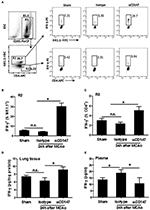

Long-term issues after immunosuppressive therapy for aplastic anemia. Long-term treatment with eculizumab in paroxysmal nocturnal hemoglobinuria: sustained efficacy and improved survival.

Paroxysmal nocturnal hemoglobinuria: natural history of disease subcategories. Paroxysmal nocturnal haemoglobinuria: long-term follow-up and prognostic factors. The epidemiology of acquired aplastic anemia. The epidemiology of aplastic anemia in Thailand. Thrombosis in paroxysmal nocturnal hemoglobinuria. Clinical course and flow cytometric analysis of paroxysmal nocturnal hemoglobinuria in the United States and Japan. Minor population of CD55 −, CD59 −, blood cells predicts response to immunosuppressive therapy and prognosis in patients with aplastic anemia. Multilineage glycosylphosphatidylinositol anchor deficient hematopoiesis in untreated aplastic anemia. Childhood paroxysmal nocturnal haemoglobinuria (PNH), a report of 11 cases in the Netherlands. Paroxysmal nocturnal hemoglobinuria in pediatric patients. Paroxysmal nocturnal hemoglobinuria in childhood and adolescence - a retrospective analysis of 18 cases. Paroxysmal nocturnal hemoglobinuria with onset in childhood and adolescence. Baseline characteristics and disease burden in patients in the international paroxysmal nocturnal hemoglobinuria registry. Paroxysmal nocturnal hemoglobinuria: a single Spanish center's experience over the last 40 yr. A comparative analysis of clinical characteristics of patients with paroxysmal nocturnal hemoglobinuria between Asia and Europe/America. Changing prognosis in paroxysmal nocturnal haemoglobinuria disease subcategories an analysis of the International PNH Registry. This seminal paper links PIGA mutations to GPI anchor deficiency in PNH. Deficiency of the GPI anchor caused by a somatic mutation of the PIG-A gene in paroxysmal nocturnal hemoglobinuria. Lymphocyte subset analysis and glycosylphosphatidylinositol phenotype in patients with paroxysmal nocturnal hemoglobinuria. Distribution of decay-accelerating factor in the peripheral blood of normal individuals and patients with paroxysmal nocturnal hemoglobinuria. This outstanding review provides the rationale for targeting C5 to treat PNH. Discovery and development of the complement inhibitor eculizumab for the treatment of paroxysmal nocturnal hemoglobinuria. A study of the mechanism of hemolysisin relation to acid-base equilibrium. Chronic hemolytic anemia with paroxysmal nocturnal hemoglobinuria. Eine neue form intermittierender haemoglobinurie (haemoglobinuria paroxysmalis nocturia). This is the first paper to demonstrate that PNH is a clonal haematopoietic disease.Įnneking, J. Paroxysmal nocturnal hemoglobinuria: evidence for monoclonal origin of abnormal red cells.

Natural history of paroxysmal nocturnal hemoglobinuria. Eculizumab, a monoclonal antibody complement inhibitor, is highly effective and the only licensed therapy for PNH.īrodsky, R. Therapeutic strategies include terminal complement blockade and bone marrow transplantation. The natural history of PNH is highly variable, ranging from quiescent to life-threatening. The accumulation of anaphylatoxins (such as C5a) from complement activation might also have a role. The loss of CD55 and CD59 renders PNH erythrocytes susceptible to intravascular haemolysis, which can lead to thrombosis and to much of the morbidity and mortality of PNH. Clinical manifestations of PNH occur when a HSC clone carrying somatic PIGA mutations acquires a growth advantage and differentiates, generating mature blood cells that are deficient of GPI-anchored proteins.

The gene product of PIGA is required for the biosynthesis of glycosylphosphatidylinositol (GPI) anchors thus, PIGA mutations lead to a deficiency of GPI-anchored proteins, such as complement decay-accelerating factor (also known as CD55) and CD59 glycoprotein (CD59), which are both complement inhibitors. PNH is caused by somatic mutations in PIGA (which encodes phosphatidylinositol N-acetylglucosaminyltransferase subunit A) in one or more HSC clones. Paroxysmal nocturnal haemoglobinuria (PNH) is a clonal haematopoietic stem cell (HSC) disease that presents with haemolytic anaemia, thrombosis and smooth muscle dystonias, as well as bone marrow failure in some cases.


 0 kommentar(er)
0 kommentar(er)
